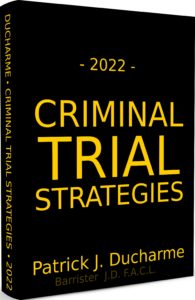Generally the lawyer producing a witness is not allowed to impeach his or her witness’s credit by general evidence of bad character–unless the witness, in the opinion of the court, proves adverse.
The meaning of the word “adverse” has generally been interpreted by our courts as not limited to “hostility” but includes a witness who, although not hostile, is unfavourable in the sense of assuming by the witness’s testimony a position opposite to that of the party who has called the witness to testify.
Our courts from time to time have, perhaps unwittingly, been seen to equate adversity with hostility. But “hostility” refers to a witness who is not providing evidence fairly and with a desire to tell the truth because of a hostile attitude toward the party that called the witness.
An adverse witness, in contrast, is a witness who, in the opinion of the court, is providing evidence that is inconsistent with a prior statement in writing, reduced to writing, or, recorded on audiotape or videotape or otherwise. Upon demonstration of the witness’s adversity, the party calling that witness may be permitted to cross-examine his own witness in relation to these inconsistencies pursuant to subsection 9(2) of the Canada Evidence Act.
The two leading cases in this area are R. v. Milgaard1 and R. v. McInroy.2 The methodology to be used by counsel confronted with an adverse witness was provided in the Milgaard case, and approved of in the McInroy case. It is as follows:
1. Counsel should advise the court that she desires to make an application under subsection 9(2) of the Canada Evidence Act;
2. In a jury case the Judge will have the jury retire until the issue has been decided. In a Judge alone case the trial Judge will embark upon a voir dire to consider the issue;
3. Counsel then advises the trial Judge of the particulars of the application and produces for the trial Judge the alleged prior statement in writing, or, prior testimony that forms the basis of counsel’s position that the witness is now adverse;
4. The trial Judge will read the statement or prior testimony to determine if, in fact, there is an inconsistency between the statement or writing or prior testimony and the testimony that the witness has now given in court. If the trial Judge finds an inconsistency the trial Judge will then call upon counsel to prove the previous inconsistent statement, or writing, or testimony of the witness. This needs to only demonstrate that the witness acknowledges giving the previous statement that now appears to be inconsistent with the witness’s present testimony.
5. Counsel then proves the statement, writing or evidence is that of the witness. This may be done by producing the statement or writing to the witness and having the witness identify it, or, with such other proof as the court considers sufficient;
6. If the witness admits making the earlier statement or giving the prior testimony, the opposing party is then provided an opportunity by the trial Judge to cross -examine as to the circumstances under which the previous statement or prior testimony was given.
7. A similar right of cross-examination is provided if the statement is proved by other witnesses. The aim of this cross-examination is for opposing counsel to be able to establish that there were circumstances that would render it improper for the trial Judge to permit the cross-examination even if there are apparent inconsistencies.
8. Also, opposing counsel will be provided an opportunity by the trial Judge of calling other evidence as to the factors relevant to the obtaining of the previous, apparently inconsistent, statement or the giving of the prior, apparently inconsistent, testimony in an effort to show that the cross-examination of the lawyer’s own witness should not be permitted; and, finally,
9. The trial Judge must then decide whether to permit the cross-examination. In a jury trial, the jury will be recalled and advised that in this limited, somewhat unusual circumstance, the court has ordered that counsel who called the witness is going to be permitted to cross-examine her own witness based on a legal ruling by the trial Judge. The end result of all of this is that the jury may conclude that the witness’s present testimony must be weighed against the witness’s inconsistencies across one or more previous statements dealing with the same issues that may leave the jury to conclude the witness’s testimony presently is unworthy of belief. If successful the application and subsequent cross-examination of counsel’s own witness may be nullified or at least seriously weakened. In effect, counsel calling the witness has effectively checkmated the witness’s failure to testify as expected based on previous statements such that the jury can safely ignore the witness’s present testimony as unworthy of belief.
The above is the an excerpt of Patrick J Ducharme’s book, Criminal Trial Strategies, available at Amazon or in bulk through MedicaLegal Publishing.
Read or listen to the Preface and Introduction and subscribe to Patrick Ducharme’s Youtube Channel.

